Following one of the most successful IPOs of 2019, Beyond Meat was on fire. But as the hype began to cool, it crashed and burned. The fall raises questions for the entire plant-based sector
Ethan Brown smiled broadly as he rang Nasdaq’s opening bell in New York’s Times Square. It was May 2019, the day of Beyond Meat’s IPO, and less than 10 years since Brown founded the company to ‘change the world’ through plant-based meat.
“To be able to have a dream and take that dream to this point is something that is hard to put into words,” Brown told a reporter against the din of his Beyond Meat colleagues behind him, decked out in branded caps and T-shirts.
A month later, the buzz around Beyond Meat’s stock hadn’t left. The boom in plant-based eating had pushed its share price up 300% to hit a dizzying $5.8bn valuation, even though the company had made just $88m in sales the year before. By July, it went even further to a peak of $235 per share – an 840% increase inside three months.
Perhaps unsurprisingly, the buzz didn’t last. Within 18 months, the dream was starting to waver as weakening restaurant sales, a costly global rollout, and larger-than-expected quarterly losses in Q4 2020 caused Beyond Meat’s share price to slide. A series of disappointing results culminated in November 2021 when analysts described the latest quarter as the one “that broke the camel’s back”. Today, the share price sits 90% below its July 2019 peak, It’s a dramatic fall from grace. One that even the announcement of Kim Kardashian in May as ‘chief taste consultant’ couldn’t counter, leaving many asking what went wrong at what was once a pioneer of plant-based meats.

All the experts The Grocer speaks to agree on one thing: that the $13.4bn market cap achieved by Beyond Meat at its peak was completely disconnected from reality. “I thought that was ridiculous” says Morten Toft Bech, founder of Meatless Farm, a British plant-based meat company, though he believes the extreme valuation had nothing to do with Beyond Meat.
“It was only to do with the hype of investors trying to make money. [It was] greed, essentially.”
Some investors failed to understand that it takes years – often decades – to change eating habits in any meaningful way, adds Will Hayllar, global managing partner at OC&C. Their valuations treated Beyond Meat like a tech or digital startup, where adoption rates and scalability can happen far quicker. “I don’t think investors appreciated those differences, particularly when you saw the rapid growth of Beyond Meat when it secured quick service restaurant listings in the US,” he says. “There’s a bit of a Silicon Valley mindset with the investment, whereas it’s a more patient game you need to play with food.”
In September 2019, when its share price had already fallen 37% from that July high, one analyst calculated Beyond Meat would need to be selling $3.7bn worth of its burgers (22 times its annual revenue at the time) to match the average price-to-sales ratio of its publicly traded peers. Or to put it another way, it needed a compound annual growth rate of 40% every year for the next decade.
“It’s a more patient game you need to play with food”
But Beyond Meat’s problem is not just that it can’t hit ambitious targets. It’s struggling to hit the modest ones. Last year, for example, revenues grew 14% thanks to a rapid global expansion which drove international sales up 77%. But this did not mean all was well. For the global rollout came at an expense of $182m, while simultaneously masking falling retail sales of 20% in its core US market in Q4.
At an earnings call in late 2021, Brown insisted many of the problems were temporary, and attributable to more conservative shopping and eating habits as the Delta variant of Covid-19 spread. He cited customers being less open to trialling new products, visiting stores less often, and being less interested in healthy options. .
In a statement in Beyond Meat’s Q1 earnings report, Brown said he recognises that “the decisions we are making today in support of our long-run ambition have contributed to challenging near-term results”, including a “sizable though temporary” reduction in gross margin as it took cost-intensive measures to support important strategic launches.
“We are confident in the future we are building while advancing our mission to bring plant-based meats and their attendant health, climate, natural resource, and animal welfare benefits to consumers around the world,” he adds.
- May 2019: Beyond Meat goes public, making its debut on the Nasdaq stock exchange with an IPO that values the company at $1.5bn. Shares soar in the first moments after listing, jumping 163% in the first day
- July 2019: The brand’s share price peaks at $235 per share, an incredible 840% gain inside three months making it one of the most successful IPOs of the year
- October 2019: Beyond Meat reports its first quarterly profit, while sales more than triple in the third quarter to $82m, above forecasts
- February 2020: The share price falls 19% in February after Q4 losses disappoint investors
- February 2021: Beyond Meat posts a larger-than-expected quarterly loss, a fact it puts down to the cost of global expansion and weak foodservice sales
- May 2021: There’s disappointment in Wall St again as Beyond Meat’s results reflect a ‘slow thaw’ rebound from the Coronavirus pandemic
- November 2021: Described by analysts as the ‘straw that broke the camel’s back’, revenues from US retail in Q3 of 2021 fall 16%
- May 2022: In its latest quarterly report, revenues once again missed expectations, falling $2.9m short of the $112.4m Wall Street had expected
Others are less convinced, insisting the challenges at Beyond Meat are more fundamental and come down to a trilogy of problems covering product, price and increasing competition.
In its early years, Beyond Meat attracted huge amounts of press for its signature product: plant-based patties that so closely resembled meat they ‘bled’ a beetroot-juice based liquid as they cooked. So coveted was the product, in fact, that its hotly anticipated launch in the UK in 2018 was delayed after demand from US consumers left supplies running short.
The problem, say some experts, is that the brand relied too heavily on the novelty of its product driving trial purchases, and not enough on creating something that would end up in shopping baskets week on week. This could explain why sales in its most established market, the US, were first to flounder, while those where the element of novelty remains continue to thrive. For now, the UK seems to be in the former camp, with sales roughly doubling in 2021, Nielsen data shows.
“They’ve done a great job of securing some fabulous partnership deals with some seriously big players,” says marketer Nigel White, who led marketing at Quorn in the early 2000s, “but the repeat rate isn’t there.” White argues a company must focus on repeat purchases and loyalty over penetration and brand awareness. “What [Beyond Meat] has done very well is the latter,” he continues. “Big splashes in foodservice in the US, a great PR machine behind them. But whether they have invested enough in their product or grassroots education – which is less sexy but ensures a repeat rate – that’s different.”
In particular, experts point to a couple of key problems with Beyond Meat’s current product range. First, it lacks diversity. Of the nine products it sells currently, all but one are red meat imitations. Even in the US that limits how often it can be consumed. In markets like the UK where red meat is less regularly a part of home diets, it could be seriously problematic.
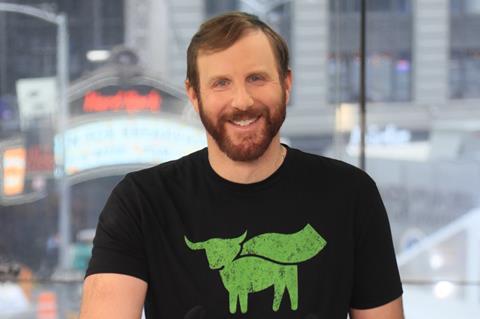
“If you look at the long-term development of plant-based alternatives, you have to do the fundamentals of category management, which are to appeal to different need states, different consumer segments, different occasions,” says Hayllar from OC&C. “At the moment the category has been dominated by burgers, sausages and perhaps mince, so there’s only a certain subset of the meat protein occasions and dishes that are being well catered to by alternatives.”
It points to a lack of insight within Beyond Meat’s global rollout, says Christoph Jenny, co-founder of alternative meat makers Planted. “Consumers were not properly identified, especially on the European side,” he says. “There was a one-size-fits-all approach.”
The second issue is a simmering pushback against the number of additional ingredients it takes to turn pea protein, coconut oil and beet juice into a burger that looks, cooks and (mostly) tastes like it came from a cow (more than 20). Although Meatless Farm’s Toft Bech dismisses the idea that meat alternatives are overly processed as “a bit of an urban legend”, there’s undeniably growing scrutiny of businesses like Beyond Meat and what their wizardry with veggies means for the health credentials of their products. In a social media analysis of the dialogue around meat alternatives online last month, Brandwatch identified a 10% increase in mentions of ‘health’ with negative perceptions of alternatives centring on ‘disgust’ toward taste and texture.
Prioritising meatiness over healthiness could be a big contributor to the brand’s woes, believes Jenny. “That’s where I think [brands like Beyond Meat] went fundamentally wrong at the beginning,” he says. “These products from a macro nutritional point of view were actually worse than the animal equivalent and that’s completely the wrong direction.”
Don’t talk to me about revenues
Even were it to nail its product though, Beyond Meat would still be struggling with its second major challenge: price. In the UK, a two-pack of Beyond Meat burgers currently retails for £4.30 at Tesco. That’s more than three-times as expensive as the own label equivalent, or more than twice as expensive as two plant-based Richmond patties, and nearly double the price of Linda McCartney’s, at £2.50 for a two-pack. Oh, and four times the cost of a mid-tier pack of Tesco beefburgers. “Yes, people try it, but they don’t carry on buying it because it’s not cheap enough, even if the quality might be OK,” says Nilpesh Patel, partner at OC&C.
Critically, even at these high-end prices, the brand is failing to stem its losses thanks to that lengthy ingredient deck, with rising commodity prices only making it more difficult to close the gap. While its revenues grew 14% in 2021, its cost of goods were up 22% in the same time period. It highlights the challenge Beyond Meat, and other plant-based specialist brands, face in standing up against the established animal protein sector.
“Don’t talk to me about revenues, talk to me about profits,” says David Trainer, Wall Street veteran and CEO of investment firm New Constructs. “If they’re growing their revenues like crazy without any profit growth, then who cares? It’s just another business selling a product below cost and it’s not sustainable. It grabs headlines, it looks good but it’s not sustainable.”
The problems facing Beyond Meat are, of course, not unique. Impossible Foods, for example, is often mentioned in the same breath as Beyond Meat, in large part due to its similar cult-like status in the plant-based world. Impossible projects the same ‘I can’t believe it’s not meat’ kind of ethos that Beyond Meat is famed for, while its distribution model has also followed a similar rollout through retail and into foodservice, rolling out in both retail and foodservice – its chicken and sausages making their UK debut in the likes of Meatliquor and Chicken Cottage in May.
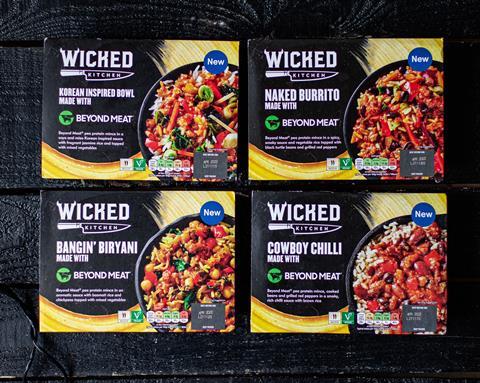
But while Beyond Meat has made headlines in recent months for the challenges on its balance sheet, Impossible has emerged unscathed. In fact, while retail sales in Q4 2021 for Beyond Meat fell 19.5% in the US, Impossible reported 85% growth in the same period.
By examining their differing fortunes, Beyond Meat’s woes can be seen in the full context of the market. The first obvious distinction is that Impossible Foods remains privately held. Though rumours of an IPO have been around since 2021, its status leaves it able to share only glimpses of its balance sheet, while Beyond Meat must lay it all bare. Impossible will only say, for example, it has “hundreds of millions of sales”.
David Trainer wagers that behind the scenes, Impossible’s challenges will look very similar to Beyond Meat’s. “They’ll have all the same problems Beyond Meat has, unless their product is so much better that it’s differentiated,” he says. “My guess would be Impossible Foods has a much smaller base to deal with and so their growth numbers look easier.”
Equally, Impossible’s more cautious approach to international expansion may be helpful. While Beyond Meat is now sold in 85 countries, Impossible Foods is available in just nine, appearing in the UK four years after its competitor. This could have left margins healthier and its success in international markets more sustained, amid reports of a better repeat rate. Not least thanks to a more diverse product portfolio, which includes alternatives for both chicken and pork, as well as red meat.
“You see the first sign of weakness and all the vultures are jumping on it”
How to make plant-based profitable is a question that affects Beyond Meat and Impossible Foods alike, with every specialist plant-based brand fighting off increased competition on supermarket shelves. From each other, yes. But more significantly from meat incumbents or retailers that can piggyback off their hype and deliver an equivalent product for far less thanks to an established supply chain.
In the UK, where Impossible is still yet to launch into retail, this is a problem of far greater urgency for Beyond Meat. “These meat incumbents are getting their head in the [plant-based] game and starting to drive scale behind this as well,” says Patel at OC&C. That’s why “in the UK the likes of Richmond are one of the most successful plant-based brands in sausages. They’ve obviously come from a heritage of pork and will have a better understanding of what it takes to drive scale into retail than some of these new companies.”
In the US at least, that Beyond Meat is the first to publicly buckle under these market pressures is in no small part due to its decision to go public three years ago, opening up its books to investor scrutiny in a way Impossible Foods is yet to do. But closer to home plant-based brands are also facing market headwinds. UK market leader Quorn too posted slowing revenue growth in late 2021, with turnover up 2.9% last year compared with 7.4% growth in 2018.
So, are the challenges at Beyond Meat really a bad sign for the plant-based sector at large? Do they, as some analysts suggest, indicate that meat alternatives are nearing peak penetration? Absolutely not, insists Toft Bech. Yes, plant-based is well out of the “honeymoon phase”, he admits. But he is confident that in the next few years demand will become more solid as more shoppers realise the strength of the category’s offering.
“We’ve come so far in the last five years,” he sighs. “You see the first sign of weakness and all the vultures are jumping on it.”








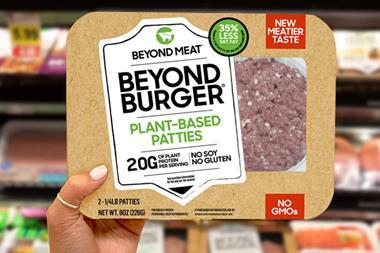
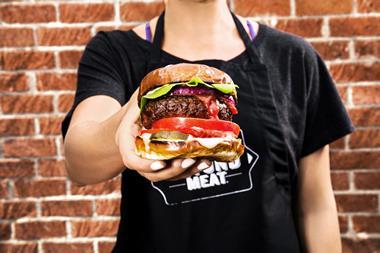
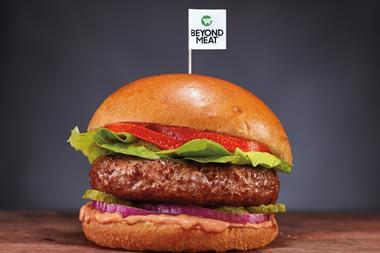
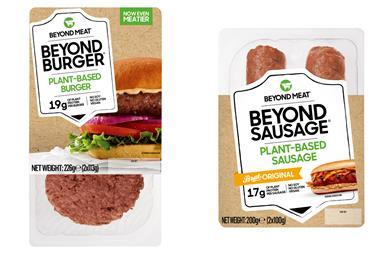
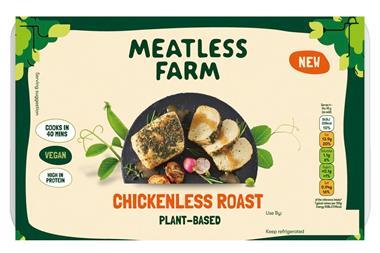







No comments yet